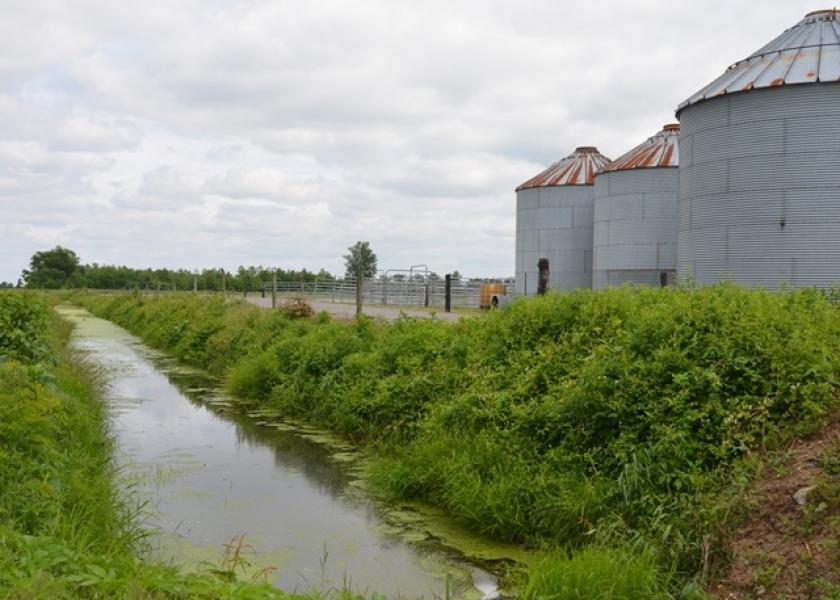WOTUS Roundtable Reveals Potential Runoff Management Flaws in the Midwest

EPA—alongside the U.S. Army Corps of Engineers—announced in February a series of scheduled roundtables with various industry participants to discuss Waters of the U.S. (WOTUS).
Each event hosts key industry professionals from every region of the nation to work toward a “shared understanding” of the challenges and opportunities to “enhance” WOTUS, according to Radhika Fox, EPA assistant administrator for water.
On Monday, the series kicked off with the National Parks Conservation Association who represents the Midwest. Participants ranging from professors to politicians discussed two topics: climate change and environmental justice.
Midwest’s Testimony
Larry Weber, professor of civil and environmental engineering at University of Iowa says climate change has and will continue to impact the Midwest in the form of increased rainfall. He says the latest climate assessment suggests rainfall will hit 5-inches in a period of 24-hours by 202 and continue to climb by .5-inches each quarter-century.
“Our soils in Iowa and across the agricultural Midwest can absorb about two inches of rain in the 24-hour period,” Weber says. “The 5-inch rain produces a 3-inch runoff, or by end of century, it will produce a 4-nch runoff. That’s an increase in runoff of 33%.”
Iowa State University research shows 93% of nitrogen and 79% of phosphorous from the dead zone to the hypoxic zone comes from agriculture. As such, Weber is advocating for a change in timing for applying certain crop fertility products.
“We need to put a moratorium on the fall application of liquid-based animal manure and anhydrous ammonia in the fall because it simply doesn't persist to serve the crop the following year,” Weber says.
According to Francis Thicke, dairy farmer and former USDA soil scientist, a goal to reduce this leeching was established in 2013, but no progress has been made. However, he feels there are solutions readily available.
“When it rains, the nitrate is taken right down to the tile drains and ultimately leads to the dead zone,” he says. “This flawed system isn’t due to harsh rains or bad weather—like most agricultural groups will say. Unless we have remedial practices and advocate for cover crops, buffer strips, a bioreactor or crop diversity, we can’t solve the problem.”
EPA Responds
Sylvia Quast, EPA’s Regional Counsel in District 9 (San Francisco, Ca.), says the first meeting provided new insights while confirming issues her team had previously discussed.
“One of the things that’s become really clear is the interconnectedness of water to all kinds of issues,” she says. “You’ve given us a lot to think about how we could do a better job of implementing definitions of WOTUS, and even more under the Clean Water Act.”
Stacy Johnson, assistant for regulatory and tribal affairs in the Office of the Army for Civil Works, says the roundtable testimony echoes the work her team has been doing for years.
“We've been focusing on climate resiliency for corps civil works infrastructure for decades, but my leadership is committed to ensuring we continue to integrate the best science as we move into the future,” she says. “These two topic areas discussed today demonstrate importance, not just our civil works, technical planning construction services, but also ways that they must be considered and implementation of regulatory context including the definition of WOTUS.”
Nine more WOTUS roundtables are scheduled in coming months.
Where the Courts are Headed
In 2021, a court in Arizona vacated the Trump administration’s WOTUS rule that restricts water eligible for protection. Due to this ruling, EPA has recently started drafting two new rules to “provide clarity” in the definition of WOTUS, with intent to reestablish the pre-2015 definition, according to the Army.
According to Jim Wiesemeyer, ProFarmer policy analyst, we can expect EPA’s amendments will include:
1. Expanded definition of WOTUS
2. An additional rule added to the new definition
While the Supreme Court is in the process of reviewing the scope of jurisdiction rooted in the Clean Water Act, the Science Advisory Board has scheduled a meeting reconsider the “scientific and technical basis” in the EPA’s first proposed rule. According to a recent Federal Register notice, the first rule would essentially reinstate the 1986 definition of federally protected waters.
More on WOTUS:
> EPA on Standby as Supreme Court Reconsiders WOTUS Rulings
> Ag Stakeholders Urge the EPA to Pause WOTUS Rewrite
> The Next Chapter of WOTUS







